Structure Life Extension towards the Structural Integrity of Sukhoi Su-30MKM
Abstract
:1. Introduction
| Failure Mode | Percentage of Failures | |
|---|---|---|
| Engineering Component | Aircraft Component | |
| Corrosion | 29 | 16 |
| Fatigue | 25 | 55 |
| Brittle fracture | 16 | - |
| Overload (ductile) | 11 | 14 |
| High-temperature corrosion | 07 | 02 |
| Corrosion fatigue | 06 | 07 |
| Creep | 03 | - |
| Wear/abrasion/erosion | 03 | 06 |
1.1. Summary of the Structure Life Extension Method
1.2. Problem Statement
- As it enters the twenty-first century, the RMAF faces three challenges in its mission to sustain a competent, state-of-the-art air force. The issues are increasing aircraft unit costs, reduced operating budget, and the continuous need for a force structure adequate to meet the nation’s pledges. Aircraft being operated commercially or by the military will eventually reach a stage, after a specific number of operation years, referred to as a structural life extension. In conjunction with their operating requirements, the Sukhoi aircraft will have to go through a service life structure assessment based on which of the following criteria is met first: 10 years’ service life calendar date
- 1500 airframe flying hours
- 5.25 million loading factors (calculated from Sukhoi’s ARM TSV System)
1.3. Fatigue Design Concept
1.4. Structural Fatigue and Durability Criteria
1.5. Structural Critical Location
1.6. Fighter Aircraft Mission Profile
- The spectrum loading (g-loading).
- Material properties, with fatigue characteristics, either S–N or E–N formulation.
- The component to be analyzed. The component should have actual physical geometry and should be analyzed to obtain its displacement, stress, and strain result.
1.7. Individual Aircraft Tracking
- It gives insight into actual usage compared to the design envelope of each aircraft.
- With the load monitoring of the primary structure and the fatigue test result, fatigue life approximation of the critical components of each aircraft can be made or their damage status determined.
- Fatigue life approximation translates into a scheduled maintenance plan.
- The operation can be altered to control the rate of fatigue life usage.
- A database on operational load and flight tests can be compiled to implement fatigue tests and comparison with initial fatigue test data.
- The discrepancy of the fleet-wide operational condition of aircraft can be determined by considering mission intensity, storage condition, and point-in-the-sky effects.
- Better insight can be gained into the loading environment through flight test data.
1.8. Structure Life Extension
1.9. Maintenance Task Card for Structural Assessment
1.10. Non-Destructive Testing Method for Structure Life Extension
2. Methodology
2.1. Fighter Aircraft Fatigue-Critical Location
- Wing root
- Vertical stabilizer attachment
- Horizontal stabilizer attachment
- Engine mounting
- Canard attachment
- Fuselage attachment
2.2. Non-Destructive Evaluation
2.2.1. Liquid Penetrant Inspection
2.2.2. Magnetic Particle Inspection
2.2.3. Eddy Current Inspection (ET)
2.2.4. Radiography Inspection
3. Results and Discussion
3.1. Non-Destructive Testing Results
3.2. Fatigue-Critical Location Assessment
3.3. Critical Component Computer-Aided Design (CAD) Model
3.3.1. Material Properties and Boundary Conditions for FEA
3.3.2. FEA on the Local Model
3.3.3. Fatigue Analysis Results
3.4. Model Validation with Experimental Data
3.4.1. Crack Growth Rate Constants of Specified Materials
3.4.2. Predicted Result Compared with Experiment Data
4. Conclusions
Author Contributions
Funding
Institutional Review Board Statement
Informed Consent Statement
Data Availability Statement
Acknowledgments
Conflicts of Interest
References
- Reddy, S.K. Fatigue Failure of Aircraft Component; Laboratories, I.R.S.N., Ed.; Material Science Council of Scientific: Bangalore, India, 2017. [Google Scholar]
- Wilson, E.S. Development RAAF Aircraft Structure Integrity Management. In Proceedings of the 18th Symposium of the International Comittee ion Aeronautical Fatigue: Estimation, Enhancement and Control Aircraft Fatigue Performance, Melbourne, Australia, 3–5 May 1995. [Google Scholar]
- Christopher, L. Effect of Cold Work Expansion on the Fatigue Life of Pre-Cracked Al 2024-T3 (2020). Ph.D. Dissertations and Master’s Theses. 2020, p. 547. Available online: https://commons.erau.edu/edt/547 (accessed on 24 September 2021).
- Negaard, G.R. The History of the Aircraft Sructural Integrity Program; DTIC: Fort Belvoir, VA, USA, 1980.
- Venugopal, A.; Mohammad, R.; Koslan, M.F.S.; Sayd Bakar, S.R.; Ali, A. The Effect of Tropical Environment on Fatigue Failure in Royal Malaysian Airforce (RMAF) Aircraft Structure and Operational Readiness. Materials 2021, 14, 2414. [Google Scholar] [CrossRef] [PubMed]
- Byron, R.A. Fatigue Aircraft; University of New South Wales: Kensington, Australia, 1981. [Google Scholar]
- Heida, J.H. Airframe Inspection Reliability Using Field Inspection Data; National Aerospace Laboratory, Ed.; Ruimtevaartlaboratorium: Amsterdam, The Netherlands, 1998. [Google Scholar]
- Liao, M.; Renaud, G. Fatigue Analysis for CF-18 Component: Wing Fold Shear-Tie Lug; National Research Council Canada Ottawa: Ottawa, ON, Canada, 2010. [Google Scholar]
- RMAF. Progressive Maintenance. Technical Equipment Maitenance Plan Su-30MKM; Kejuruteraan, B., Ed.; RMAF: Kuala Lumpur, Malaysia, 2007.
- USAF. MIL-STD-1530C Aircraft Structure Integrity Program (ASIP); Department of Defense Standard Practice, United State Airforce: Washington, DC, USA, 2004.
- Kyu, P.J.; Han, L.D.; Jae, L.C.; Cheul, C.B.; Tae, C.K. Finite Element Method Analysis and Life Estimation of Aircraft Structure Fatigue/Fracture Critical Location; Korean Aerospace: Sacheon, Korea, 2001. [Google Scholar]
- Jonge, J.B.D. The monitoring of fatigue loads. In Proceedings of the 7th Congress of the International Council of Aeronautical Sciences, Roma, Italy, 14–18 September 1970. [Google Scholar]
- Crocker, D.; Oore, M. Individual aircraft tracking system for the Canadian P-3C (CP-140/A) aircraft structural integrity program. In Proceedings of the 18th Symposium of the International Committee on Aeronautical Fatigue: Estimation, Enhancement and Control of Aircraft Fatigue Performance, Melbourne, Australia, 3–5 May 1995. [Google Scholar]
- Molent, L. A Review of a Strain and Flight Parameter Data Based Aircraft Fatigue Usage Monitoring System. In USAF ASIP Conference; United States Airforce: Montgomery, AL, USA, 1997. [Google Scholar]
- Grandt, A.F. Fundamentals of Structural Integrity: Damage Tolerence Design and Nondesreuctive Evaluation; John Wiley and Sons: Hoboken, NJ, USA, 2004. [Google Scholar]
- Patria, J.T. Fatigue Life Evaluation of Critical Locations in Aircraft Structures Using Virtual Fatigue Test. In Proceedings of the International Congress of The Aeronautical Sciences, Toronto, ON, Canada, 8–13 September 2002. [Google Scholar]
- USAF. USAF Complete Evaluation of KC-135 Block 45 Upgrade; USAF: Washington, DC, USA, 2013. Available online: https://www.airforce-technology.com (accessed on 10 August 2021).
- Brewster, M. Sea King Helicopter to Remain in Skies Past Retirement. CBC News Nova Scotia, 23 September 2015. [Google Scholar]
- Goon, C.K. Air Power Australia; Defence, D.O., Ed.; Australian Airforce: Melbourne, Australia, 2005.
- Desai, P.K. Life Extension of Aircraft Component-An IAF Perspective. In Recent Trends in Structural Integrity Assessment; Raganath, S.T.V.R., Ed.; Indian Airforce: Delhi, India, 2001. [Google Scholar]
- Srinivasan, M.; Vijayaraghavan, P. NDE for Prevention of Failures and Life Extension of Structures and Components of Aircrafts; Hindustan Aeronautics Limited: Bangalore, India, 2015. [Google Scholar]
- Moiseyev, V.N. Titanium Alloys Russian Aircraft and Aerospace Applications; CRC Press: Boca Raton, FL, USA, 2006. [Google Scholar]
- Yarema, S.Y.; Grechko, V.V.; Ostash, O.P. Cyclic Crack Resistance to VT20 Titanium Alloy Sheets and Its Anisotropy. Fiz. Mekhanika Mater. 1978, 16, 47–52. [Google Scholar] [CrossRef]
- Taheri, F.; Trask, D.; Pegg, N. Experimental and analytical investigation of fatigue characteristics of 350WT steel under constant and variable amplitude loading. Mar. Struct. 2003, 16, 69–91. [Google Scholar] [CrossRef]
- Ray, A.; Patankar, R. Fatigue crack growth under variable-amplitude loading: Part II-Code development and model validation. Appl. Math. Model. 2001, 25, 995–1013. [Google Scholar] [CrossRef]
- Porter, T.R. Method of analysis and prediction for variable amplitude fatigue crack growth. Eng. Fract. Mech. 1972, 4, 717–736. [Google Scholar] [CrossRef]
- Venugopal, A.; Mohammad, R.; Koslan, M.F.S.; Shafie, A.; Ali, A.B.; Eugene, O. Crack Growth Prediction on Critical Component for Structure Life Extension of Royal Malaysian Air Force (RMAF) Sukhoi Su-30MKM. Metals 2021, 11, 1453. [Google Scholar] [CrossRef]
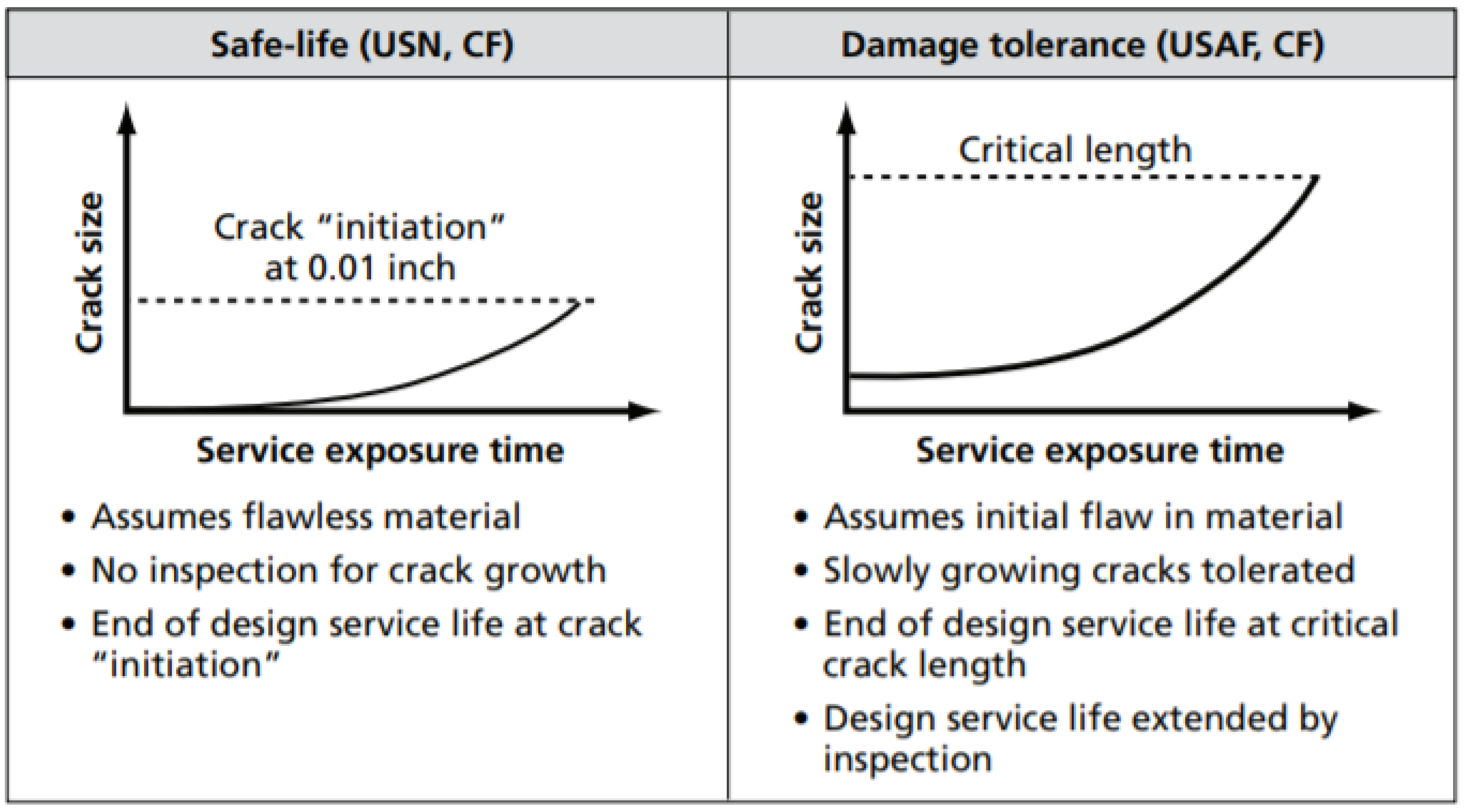
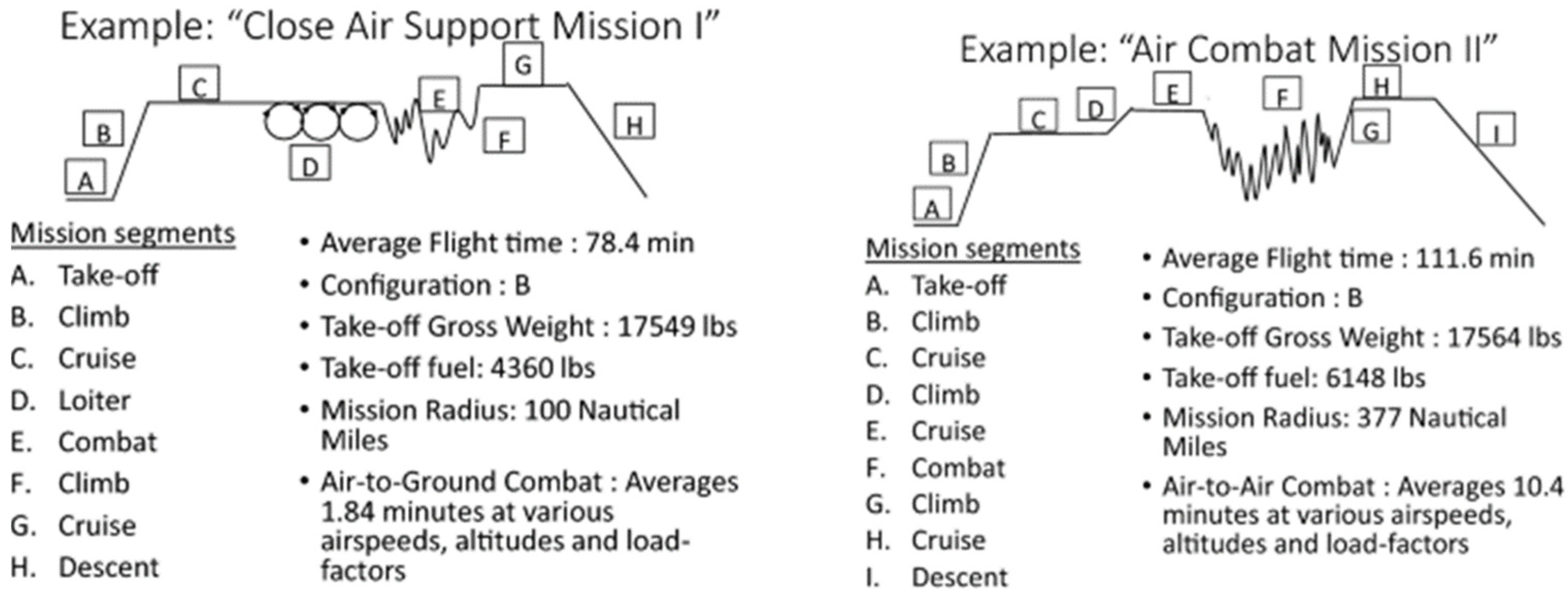
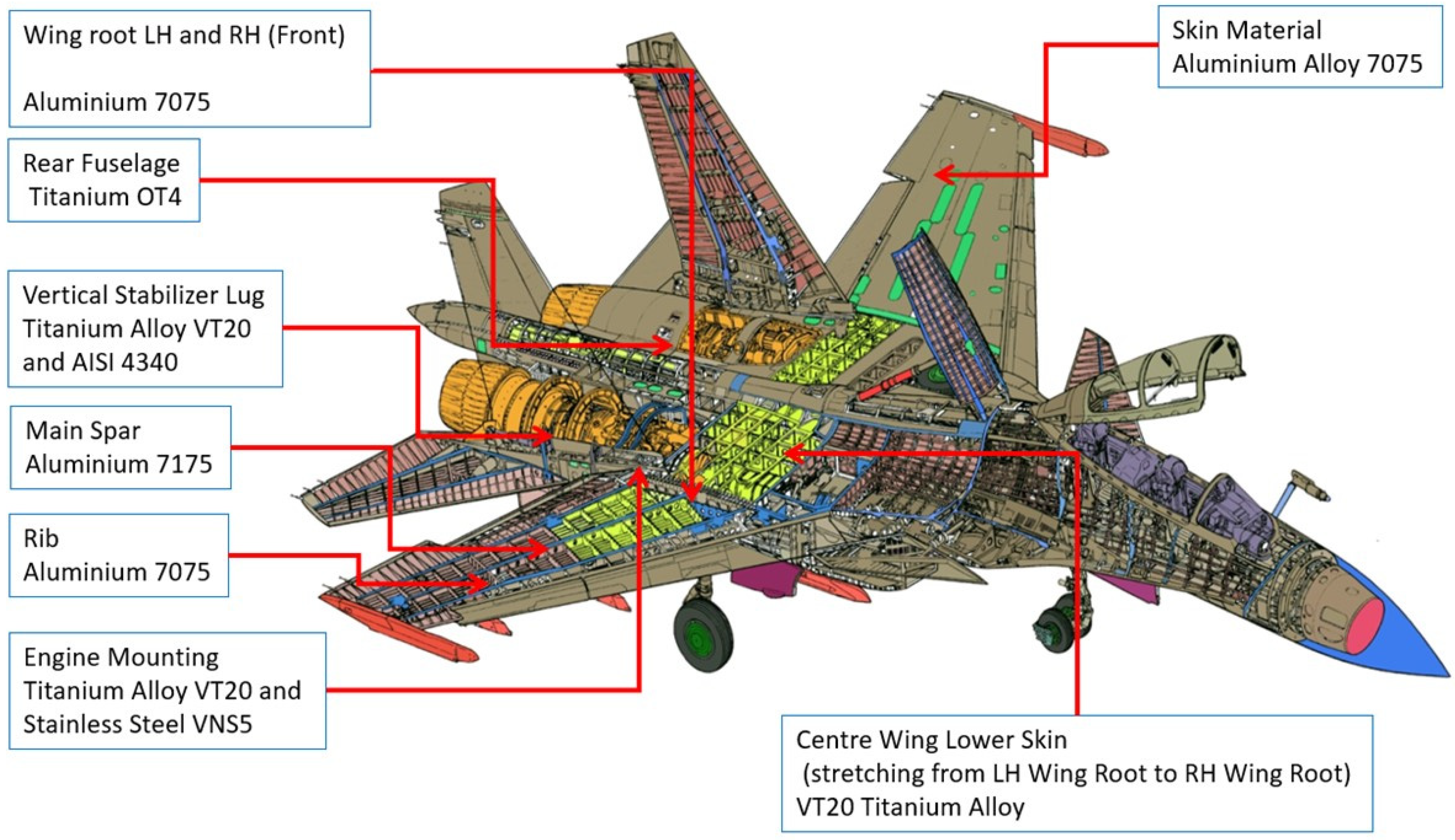

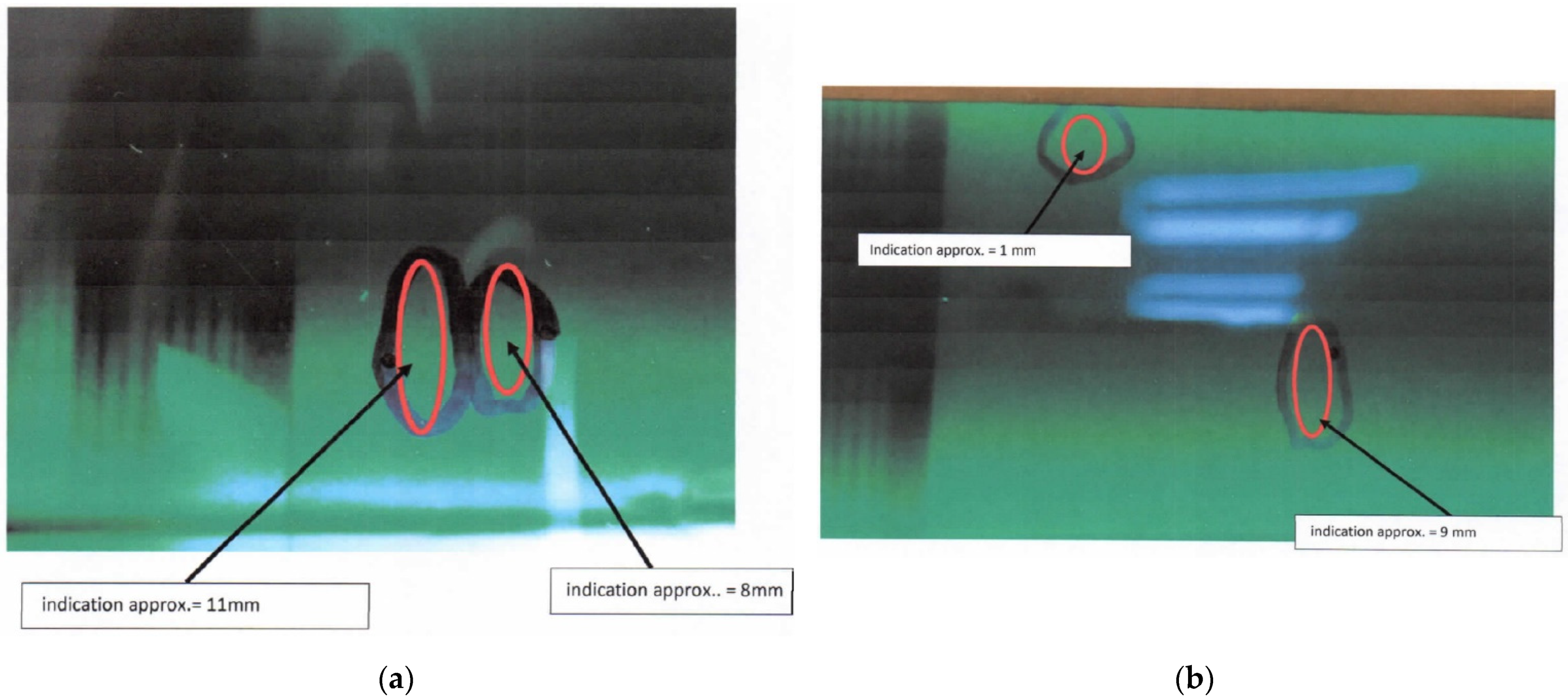
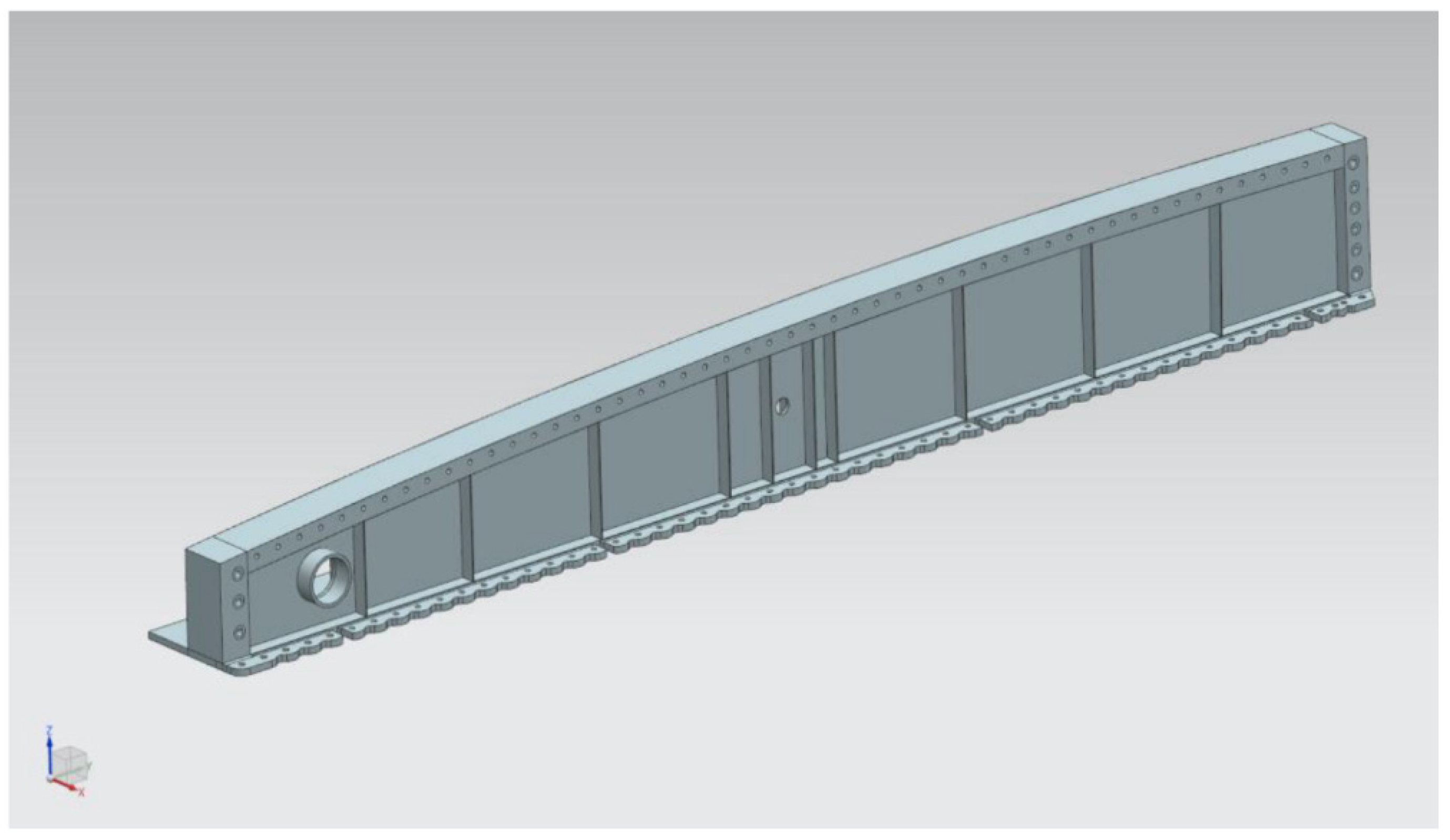

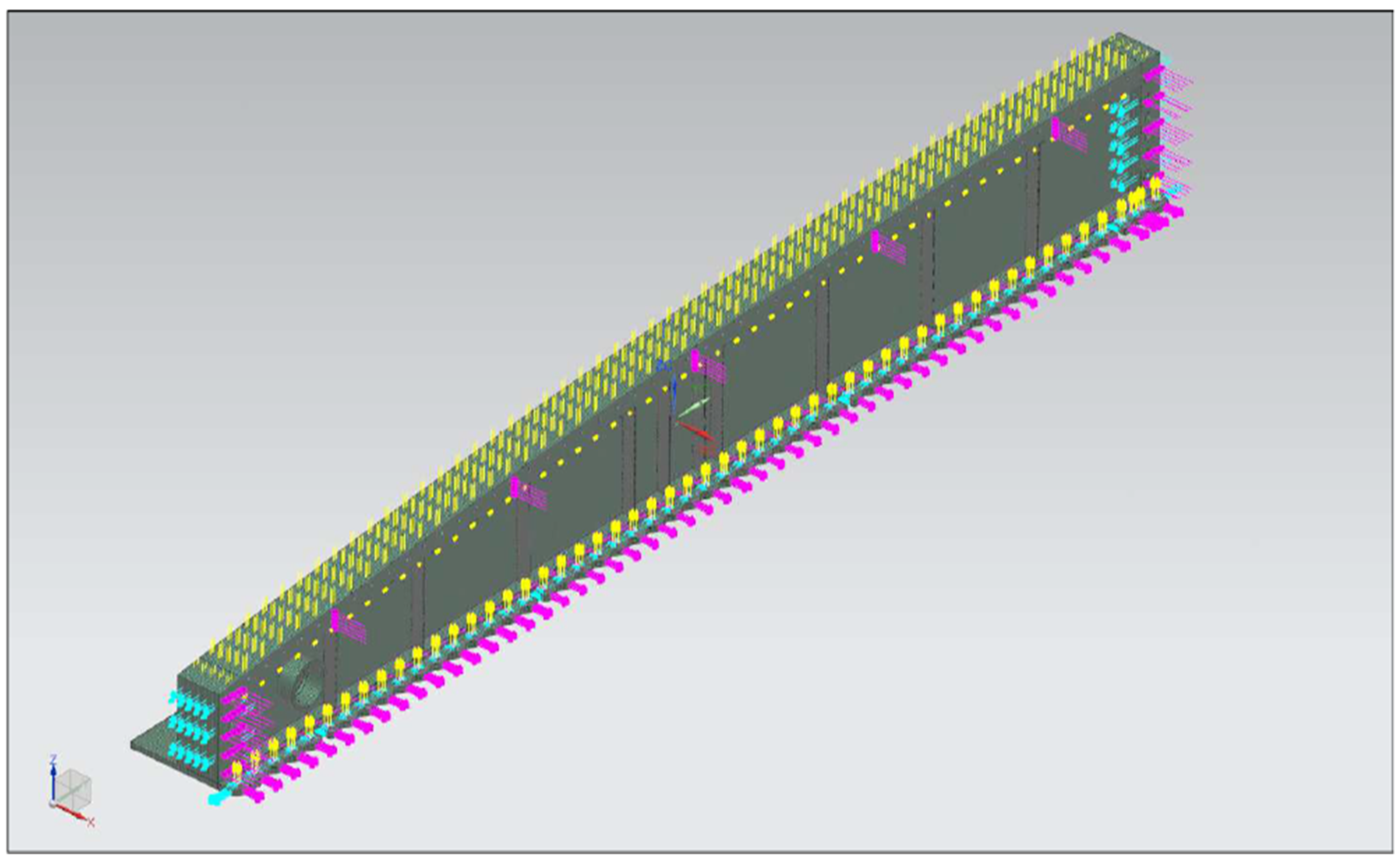
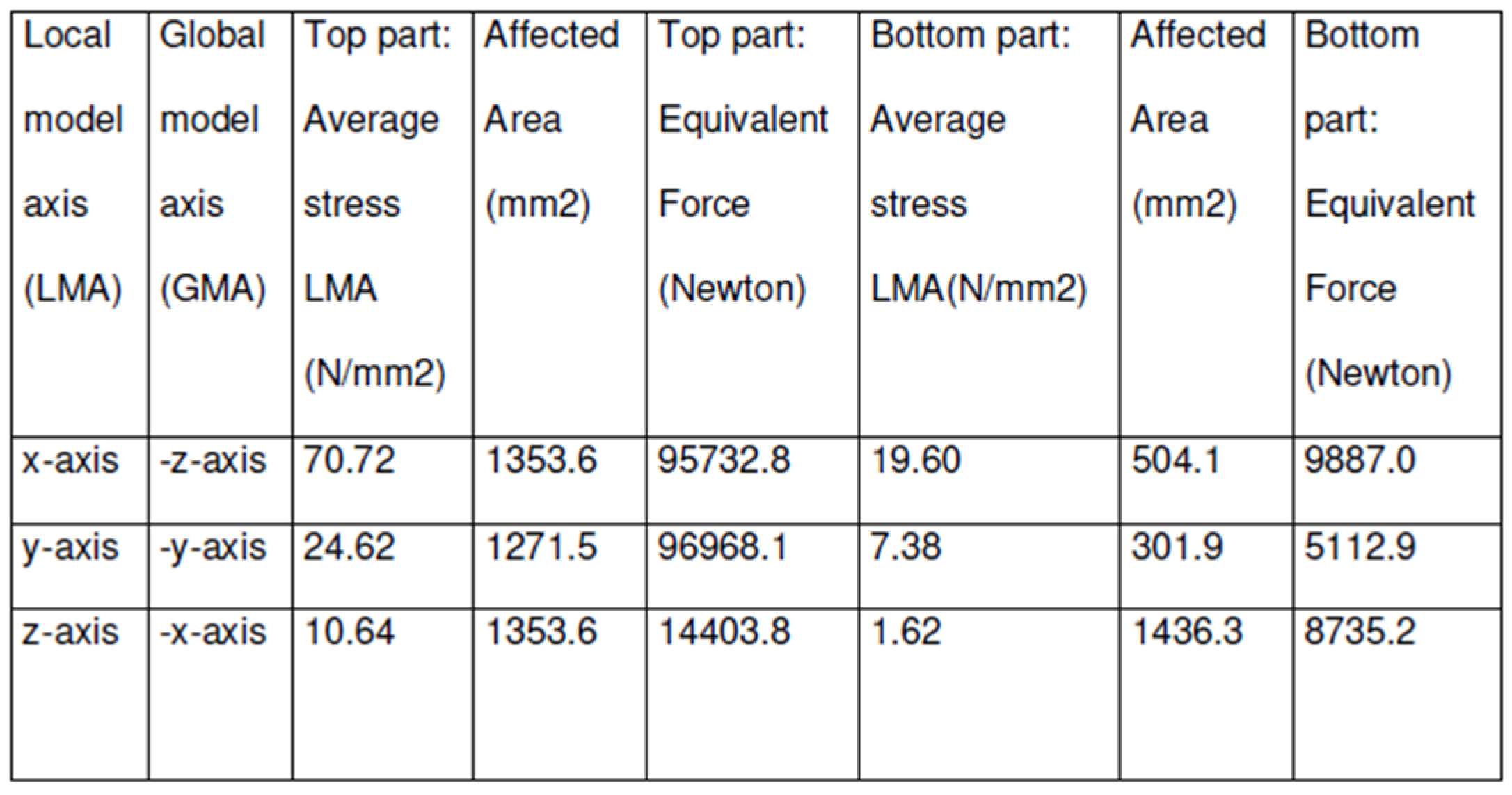
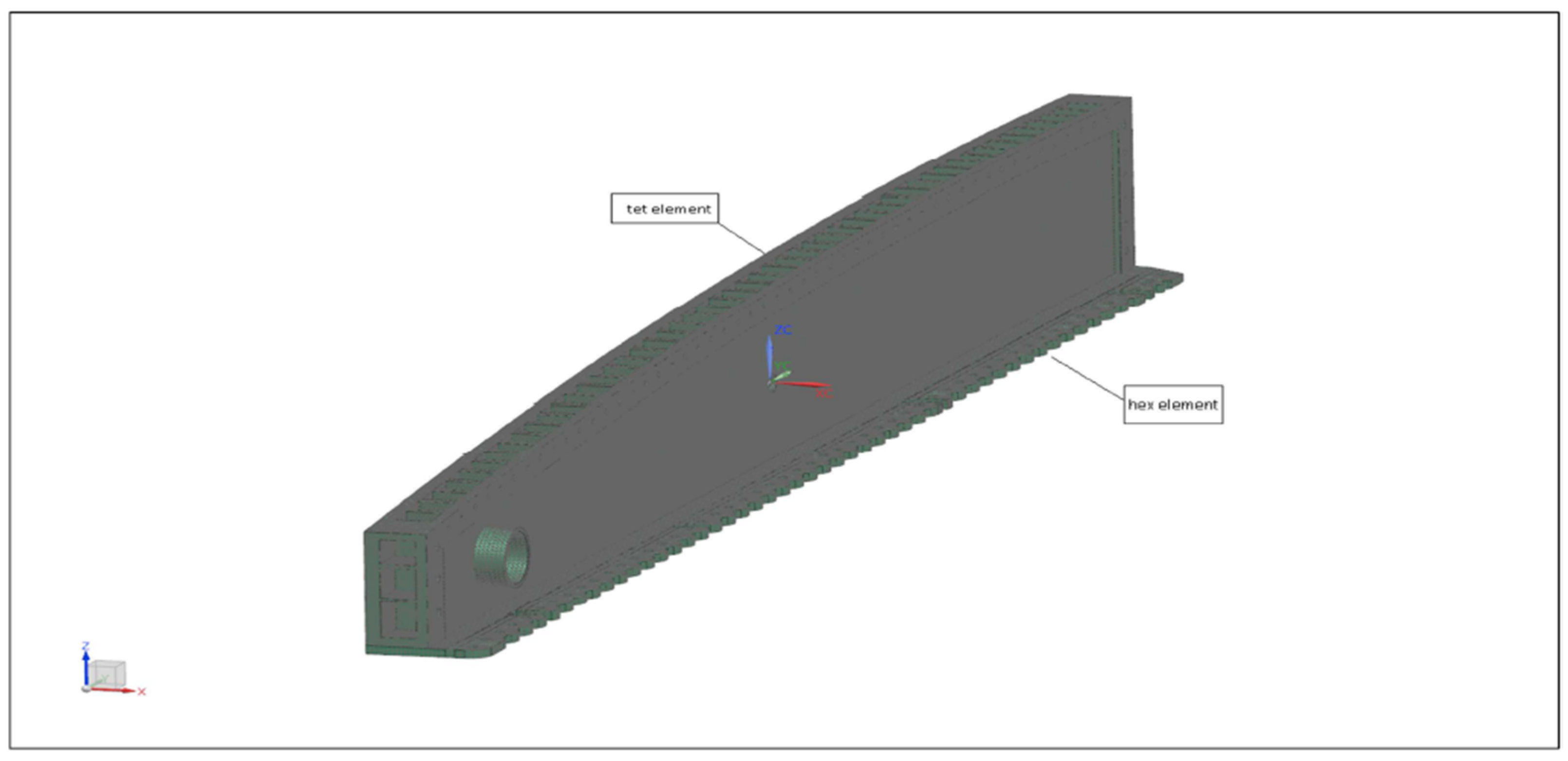
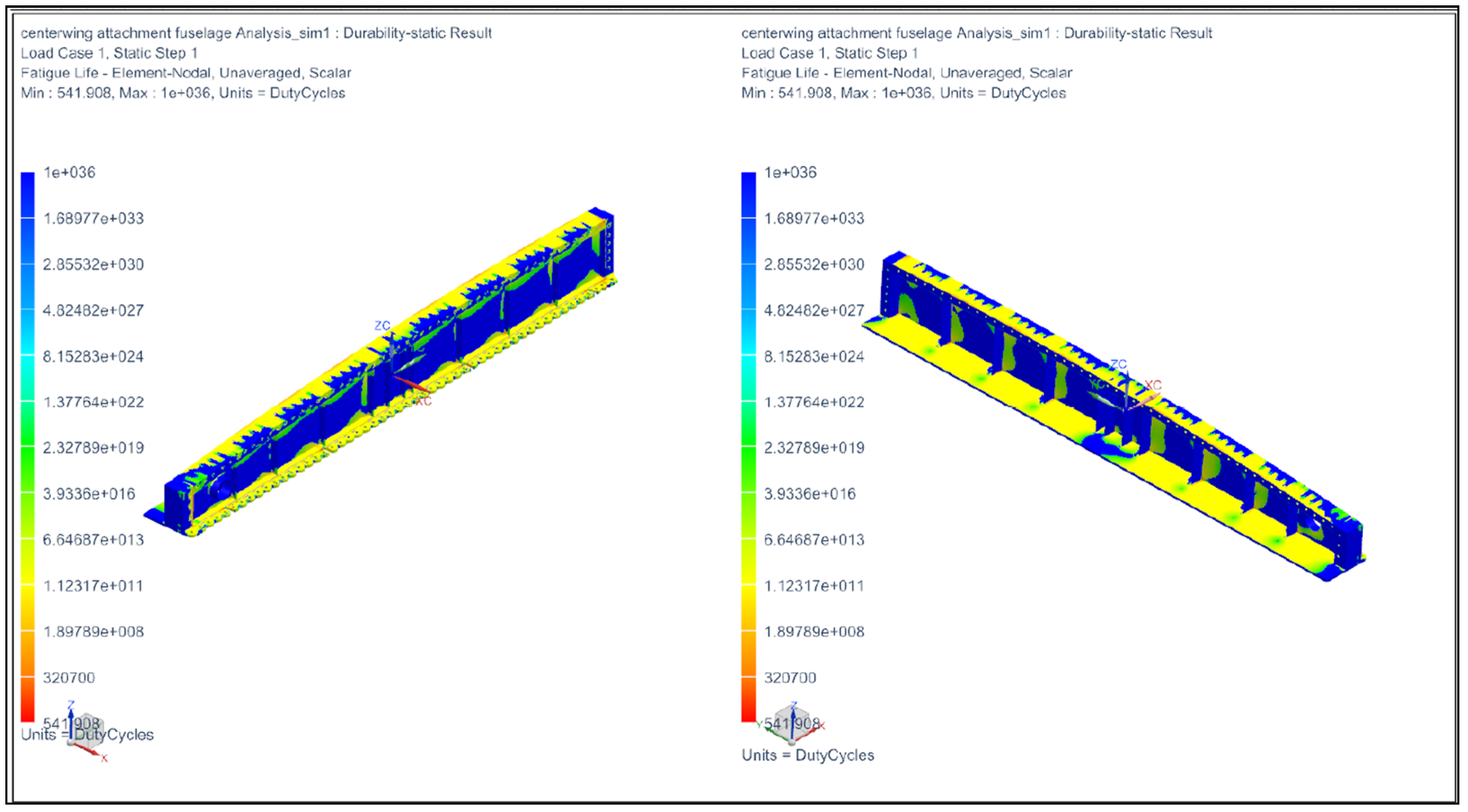
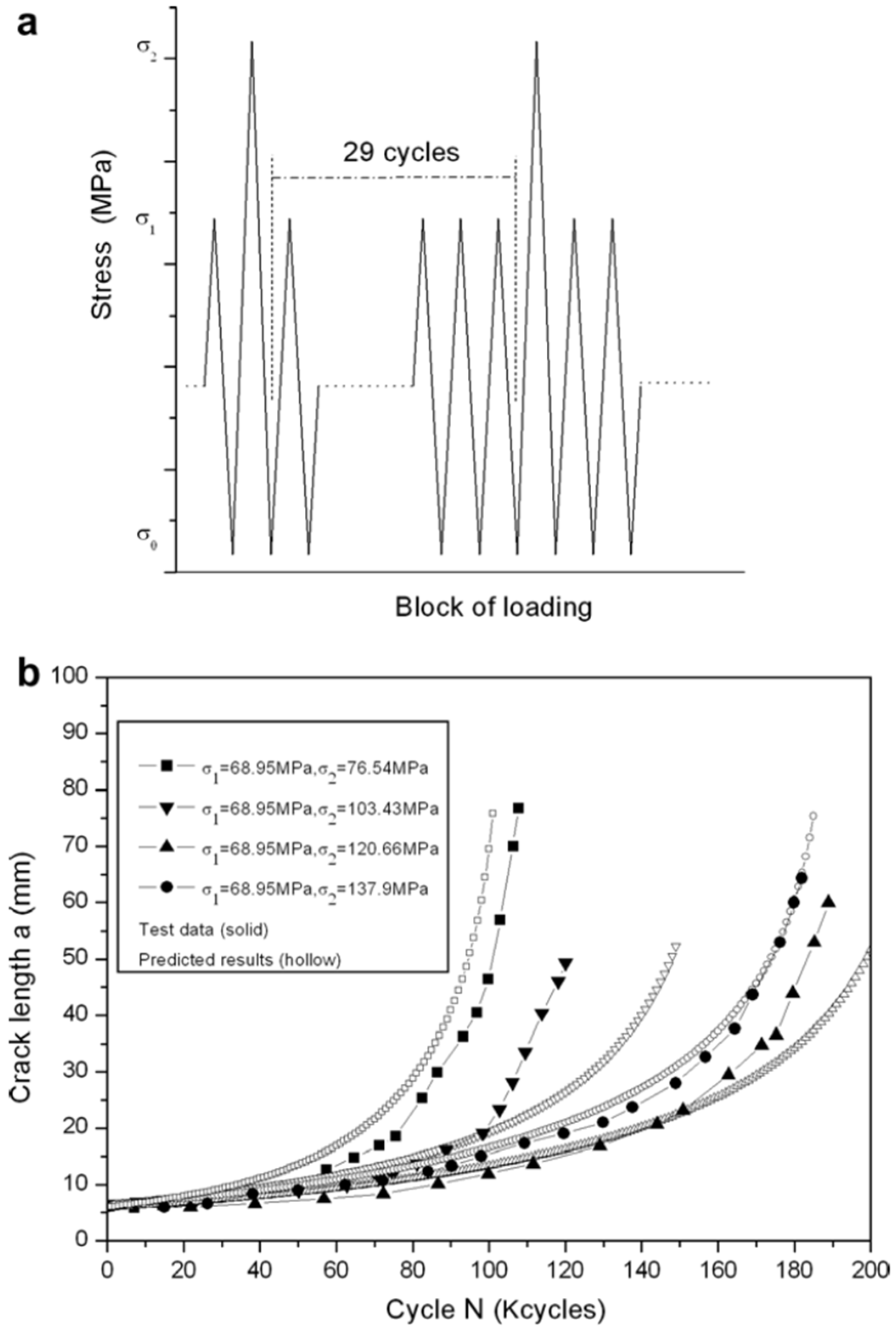
| No | Author | Topic | Concept | Total Number of Years Extended | Analysis Used |
|---|---|---|---|---|---|
| 1 | Kurnyta et al. | Ageing Fighter—Bomber Aircraft Durability Tests and Operational Load Monitoring to Support Life Extension Program | 1. Ground and flight tests for a separate aircraft. 2. FDR archive analysis for 5 years of operational use of the whole fleet. 3. Full-scale durability test for the retired aircraft. 4. Operational loads monitoring (OLM) system implementation for all Su-22UM3K. | Full-scale fatigue test | |
| 2 | Ilic et al. (2011) | Important Aspects for Extension of Fighter Plane Service Life by Performing Overhaul Based on the Actual Condition | 1. Analysis of the plane documentation for information such as flight hours, working conditions, frequency of conducting established preventive maintenance, flight profiles, typical failures, and their consequences for the plane. 2. Overhaul based on its actual condition, which means that the aircraft components will be replaced as required. This means that the majority of the components that have failures will be replaced, which can extend the life of the aircraft. | Document history and modification | |
| 3 | Clark | Aircraft Fatigue Life Extension: Development of a Mid-life Rework Method Based on Peening | 1. Rework method in which a surface layer that has been damaged by cracking, or by other methods, is removed in a controlled manner, a crucial factor when reworking critical parts where a small error can lead to extremely expensive repairs. The clean surface can then be peened using a controlled technique that produces minimal damage on the surface and maximizes the life improvement factor (LIF) for the process. | Modification to critical components | |
| 4 | Pentz (2000) | A Service Life Extension (SLEP) Approach to Operating Aging Aircraft Beyond Their Original Design Lives | 1. Aircraft mission data collection and simulation model. 2. Accuracy of the simulation model. 3. Testing the validity of the simulation model. 4. Planning simulations to be performed. 5. Conducting the simulation and data analysis. | 600 to 2000 h | Engineering analysis |
| 5 | Molent and Aktepe (2000) | Review of Fatigue Monitoring of Agile Military Aircraft | 1. Fitment of airborne fatigue monitoring system. 2. Individual aircraft fatigue monitoring system. 3. Operational load monitoring to determine the loads at the critical locations compared to g-meters. 4. Usage monitoring data based on flight hours, mission type, duration, and aircraft weight data. | 2000 h | On-board sensors |
| 6 | Maksimović et al. (2015) | Service Life Extension Program for Aircraft Structures | 1. Non-destructive inspection methods. 2. Numerical structure analysis (stress analysis from the aspect of fatigue and fracture mechanics). 3. Simulation analysis (flight loads and load cycle analysis). 4. Experimental testing of aging structure specimens. 5. Software development for the prediction of remaining service life beyond the designed service life. 6. The methods are used for the prediction of the remaining service life of the aircraft beyond its designed service life. | 1000 h | Computation and experiment |
| 7 | Rui et al. (2018) | Individual Aircraft Life Monitoring: An Engineering Approach for Fatigue Damage Evaluation | 1. Mechanical properties of related materials are obtained, including the elasticity modulus, the yield strength, the tensile strength, and the S–N curve. 2. The load spectra for full-scale fatigue tests are definitely determined. During the aircraft structural development stage, the load spectra for full-scale fatigue tests are compiled based on relevant theories and experience, and the load spectrum for each critical structure can therefore be obtained. 3. Regarding the fatigue life of aircraft structures, full-scale fatigue test data are complete and comprehensive. Full-scale fatigue tests are conducted under the predetermined load spectrum to identify critical locations and obtain pertinent crack growth information during the final stage of aircraft structural design. 4. Realistic load spectra for individual aircraft can be developed based on the operational data. | Traditional nominal stress method | |
| 8 | Desai (2001) | Life Extension of Aircraft Components—An IAF Perspective | 1. Assessment of structural condition and timely detection of structural problems. 2. Fatigue testing and teardown inspection. 3. Improved NDE technology. | 2500 h/25 years | Non-destructive testing |
| 9 | Molent et al. (2012) | Verification of an Individual Aircraft Fatigue Monitoring System | 1. Using an enhanced teardown procedure, in-service fatigue crack growth was identified at a significant number of locations. All the in-service cracking corresponded to the same locations found cracked in the fatigue certification full-scale test article that was used to calibrate the usage monitoring system. By comparing the measured in-service growth with the test-demonstrated growth, the functionality of the monitoring system could be assessed. This assessment should reveal the system’s effectiveness in providing robust fatigue-life-expended indices to help ensure that structural integrity boundaries are not exceeded. For this comparison, the crack growth was measured using quantitative fractography. | Previous condition compared with a simulated test |
| Wing Root LH and RH | |
|---|---|
| Method | Result |
| Eddy current inspection | High-frequency eddy current inspection was carried out, and NIL crack indication was found. |
| Liquid penetrant inspection | Fluorescent penetrant inspection was carried out, and NIL crack indication was found. |
| Vertical Stabilizer LH and RH Attachment | |
| Eddy current inspection | Eddy current inspection was carried out, and NIL crack indication was found. |
| Horizontal Stabilizer LH and RH Attachment | |
| Magnetic particle inspection | Magnetic particle inspection was carried out, and NIL crack indication was found. |
| Engine Mounting LH and RH | |
| Magnetic particle inspection | Magnetic particle inspection was carried out and discontinuities were found at the external and internal surface of the mounting, as depicted in Figure 4. |
| Radiography inspection | X-ray inspection was carried out on the engine mounting and discontinuity was found, as depicted in Figure 5. |
| Canard LH and RH Attachment | |
| Eddy current inspection | Eddy current inspection was carried out, and NIL crack indication was found. |
| Upper Longeron at Frame No. 18 | |
| Eddy current inspection | Eddy current inspection was carried out, and NIL crack indication was found. |
| Center-rear attachment at Frame No. 34 | |
| Eddy current inspection | Eddy current inspection was carried out, and NIL crack indication was found. |
| Year | Damage |
|---|---|
| 2008 | 3.32 × 10−5 |
| 2009 | 0.00021 |
| 2010 | 1.99 × 10−5 |
| 2011 | 0.00029 |
| 2012 | 0.00011 |
| 2013 | 0.00040 |
| 2015 | 0.00069 |
| 2017 | 8.86 × 10–5 |
| TOTAL | 0.0018 |
| Specimen Material | σy (MPa) | C | m | n | t (mm) | w (mm) |
|---|---|---|---|---|---|---|
| 7075-T6 (aluminum alloy) | 520 | 6.85 × 10−8 | 3.21 | 0.3 | 4.1 | 305 |
| 2024-T3 aluminum alloy | 315 | 3.0 × 10−8 | 3.1/3.2 | 0.32 | 4.1 | 229 |
| 350WT steel | 350 | 1.5 × 10−8 | 2.8 | 0.5 | 5 | 100 |
Publisher’s Note: MDPI stays neutral with regard to jurisdictional claims in published maps and institutional affiliations. |
© 2021 by the authors. Licensee MDPI, Basel, Switzerland. This article is an open access article distributed under the terms and conditions of the Creative Commons Attribution (CC BY) license (https://creativecommons.org/licenses/by/4.0/).
Share and Cite
Venugopal, A.; Mohammad, R.; Koslan, M.F.S.; Shafie, A.; Ali, A.; Eugene, O. Structure Life Extension towards the Structural Integrity of Sukhoi Su-30MKM. Materials 2021, 14, 5562. https://doi.org/10.3390/ma14195562
Venugopal A, Mohammad R, Koslan MFS, Shafie A, Ali A, Eugene O. Structure Life Extension towards the Structural Integrity of Sukhoi Su-30MKM. Materials. 2021; 14(19):5562. https://doi.org/10.3390/ma14195562
Chicago/Turabian StyleVenugopal, Arvinthan, Roslina Mohammad, Md Fuad Shah Koslan, Ashaari Shafie, Alizarin Ali, and Owi Eugene. 2021. "Structure Life Extension towards the Structural Integrity of Sukhoi Su-30MKM" Materials 14, no. 19: 5562. https://doi.org/10.3390/ma14195562
APA StyleVenugopal, A., Mohammad, R., Koslan, M. F. S., Shafie, A., Ali, A., & Eugene, O. (2021). Structure Life Extension towards the Structural Integrity of Sukhoi Su-30MKM. Materials, 14(19), 5562. https://doi.org/10.3390/ma14195562






